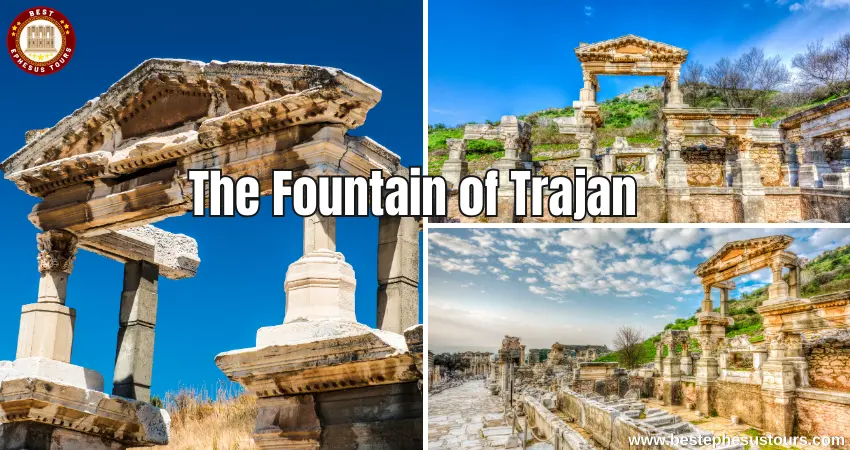
Overview of the Fountain of Trajan
The Fountain of Trajan in Ephesus also known as Trajan’s Nymphaeum is a monumental fountain built in honor of the Roman emperor Trajan. It’s one of the highlights of our Kusadasi Shore Excursions and Ephesus Tours from Kusadasi Port. The fountain was built to supply the city with fresh water showcasing the Romans’ advanced understanding of hydraulics and urban infrastructure and also served as a monumental ornament.
Table of contents
Historical Background and Construction
The construction of the fountain began in 109 AD and was completed by 113 AD when Emperor Trajan enlarged the harbor at Ephesus. It is one of the largest and most well-preserved monuments from antiquity and it has been called “the greatest monument to a Roman Emperor.”
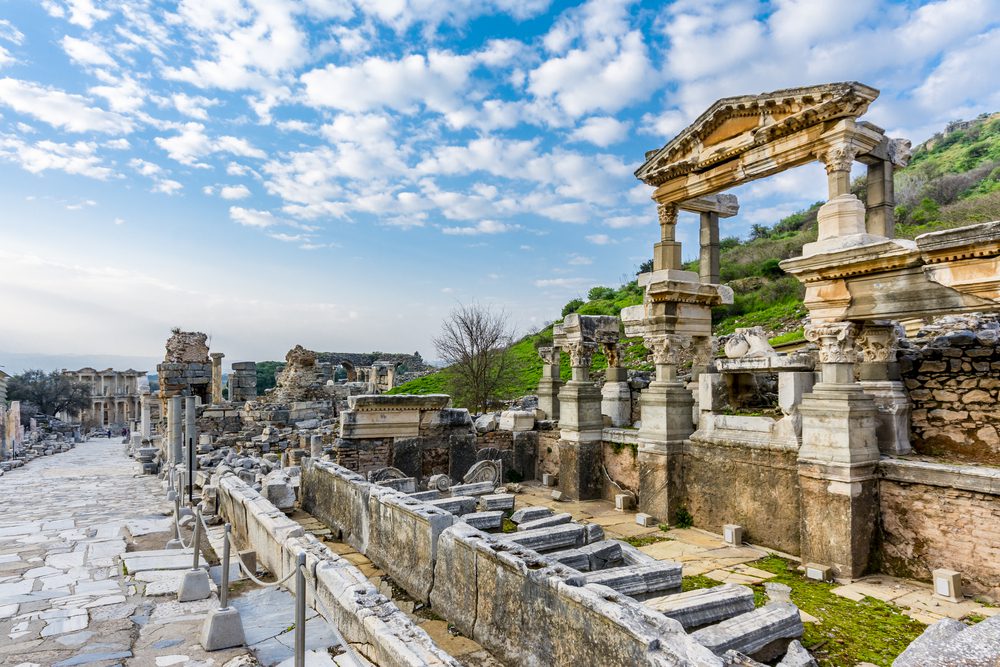
The Architecture of Trajan’s Fountain
The water for the fountain was brought by an aqueduct from nearby mountains and then stored in two large tanks underground level, then flowed out again to be used for irrigation or drinking water. It featured a symmetrical layout, with a central pool surrounded by Corinthian order columns and statues. Around the fountain pool was decorated with statues of Aphrodite, Dionysus, Satyr, and the Emperor’s family reflecting the Roman pantheon’s influence on art and culture.
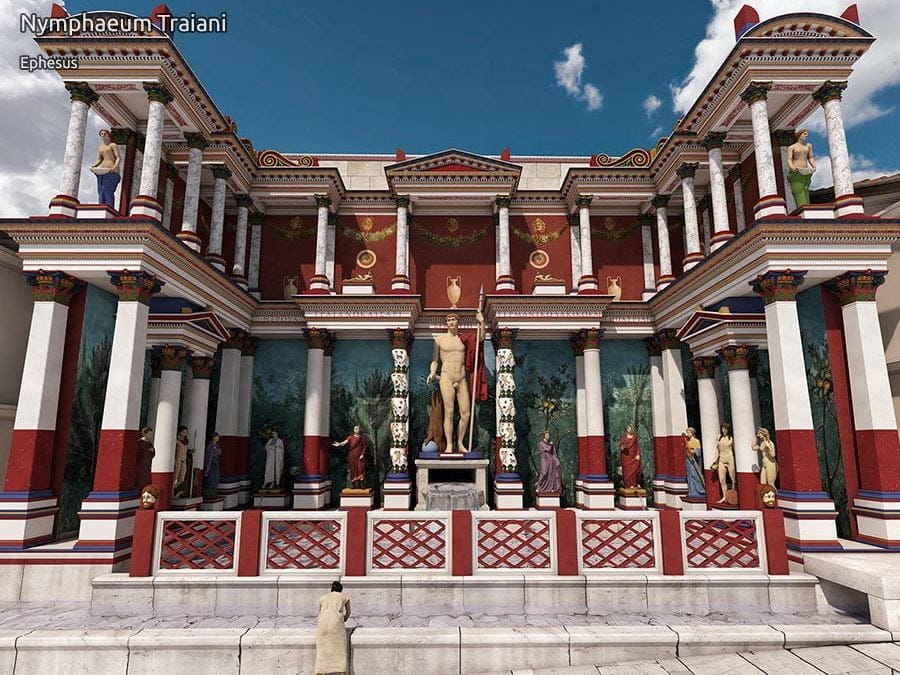
The Statue of Trajan
A significant feature of the Trajan fountain was the colossal statue of Emperor Trajan which stood at its center. Trajan’s statue was twice the size of other statues around him. This statue, now partially reconstructed, symbolized the emperor’s divine status and his contributions to Roman society. Water was flowing into the fountain from the pedestal of the Trajan statue. Today, only the feet of this statue and a part of its facade decorated with columns in the Corinthian order have survived.
Trajan Fountain Video
Maintenance and Functionality
There was also a water plug in the pool. Because the water waiting for a long time will start to collect algae. To prevent flooding, the water was periodically drained by opening the tap, while simultaneously cleaning the streets.
Life of Roman Emperor Trajan
Emperor Trajan is a significant figure in Roman history, known for his military conquests and administrative reforms. The Trajan Fountain is a reminder of his impact on the Roman Empire and his legacy in the cities under his rule. He was the second of the “Five Good Emperors” of Rome. He ruled the Roman Empire between 98 and 117. Trajan was born in Italica, Hispania Baetica, from a well-established family which had originated in Picenum which made him the only emperor who was born outside of Italy.
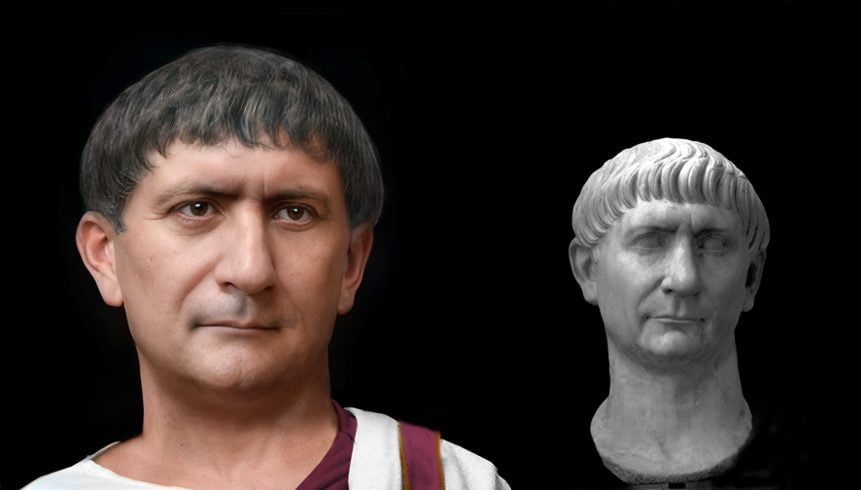
He was the son of Marcia, probably African-originated, and said to have been a descendant of King Masinissa (a Numidian). Trajan served with distinction as a military commander under Emperor Nerva during his father’s invasion of Armenia in 95, and his subsequent campaign against Parthia. He was famous for his successful military conquests. So the Roman Empire reached its greatest land size during the reign of Emperor Trajan.
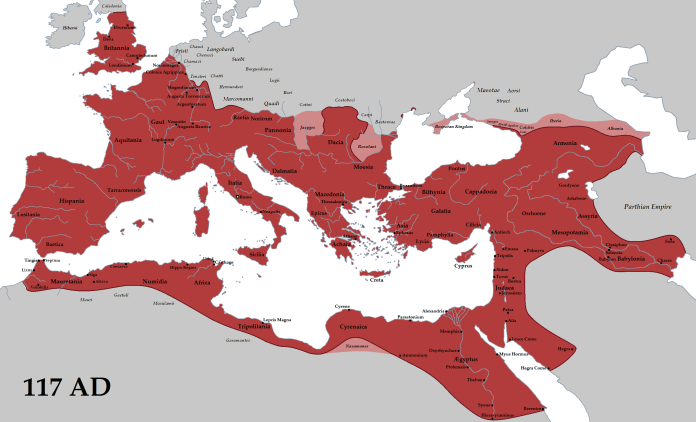
Trajan died at the age of 64 at Selinus (present-day Selindi), on the southern coast of Asia Minor of the Roman Empire. His ashes were returned to Rome for a state funeral and buried at the base of his column. Just before his death was made public, it was announced that Trajan had adopted Hadrian. With this adoption, the reign of Hadrian began.
You May Also Like
If you want to explore the Fountain of Trajan in Ephesus on-site with us, you can reach us on 7/24 from the links below.






